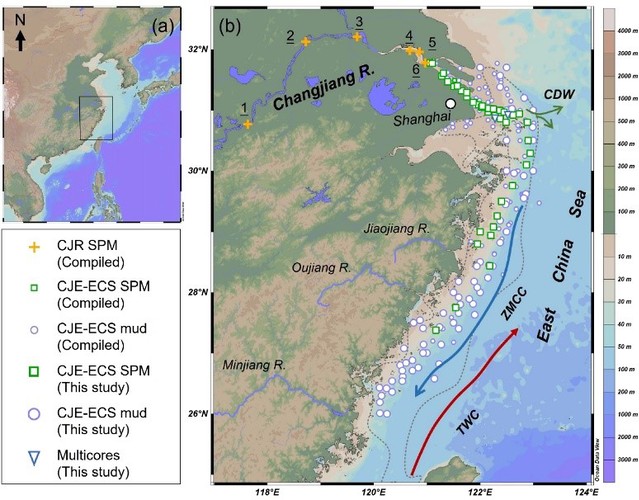Xuechao Wu1,2 , Shouye Yang1,* , Klaus Wallmann2 , Florian Scholz3, Yanguang Dou4, Junjie Guo1 , Xinning Xu1
1 State Key Laboratory of Marine Geology, Tongji University, Shanghai, China
2 GEOMAR Helmholtz Centre for Ocean Research Kiel, Kiel, Germany
3 Institute for Geology, Center for Earth System Research and Sustainability, Universitat Hamburg, Hambure, Germany
4 Key Laboratory of Marime Hydrocarbon Resources and Environmental Geology, Qingdao Instite of Marine Geology, Ministry of Nalural Resources, Qingdao, China
*Corresponding author.
Email: syyang@tongji.edu.cn
Abstract
Potassium (K) is a major cation in seawater, but its budget remains not well understood mainly because of the poor constraint on the authigenic clay formation at the seafloor. Mlarine authigenic phases are assumed to haveplayed a substantial role in balancing the long-term equilibrium of seawater chemistry and regulating Earth's climate, However, the global importance of K-rich authigenic clay minerals for the marine K budget remains poorly quantified. In this study, we report the K content and its spatial variation along the Changjiang (Yangtze) River-Estuary-East China Sea transect, aiming to reveal the influence of authigenic uptake processes on themarine K budget, By combining our new data on the K composition of various sediment and porewater samples with previously published data, we found that the K/Al ratio of the marine particulate matter is substantially higher than that of the riverine endmember, with the averages of 0.31 + 0.04 and 0.25 + 0.02, respectively. Based on the observation of decreasing K concentration with depth in porewater and an increasing abundance ofgreen grains (mostly glauconite-like) towards the shelf, we propose that these geochemical changes are caused bythe authigenic uptake of K from seawater. Our preliminary calculation suggests that when upscaled to all theriver-dominated ocean margins, the global uptake flux of K is approximately 81 + 62 Tg yr-1, which is comparable in magnitude with the dissolved flux coming from global rivers. Our findings highlight the role of authigenic mineral formation in modifying the geochemistry of seawater and marine sediments.
Full Article: https://doi.org/10.1016/j.epsl.2025.119292

Figure 1. Sampling location of study samples

Figure 2. Comparison of K/Al ratios of sediments from the Yangtze River estuary-inland shelf and materials entering the sea from the Yangtze River

Figure 3. Decrease in estuarine sediment pore water K concentration, K/Cl ratio with depth

